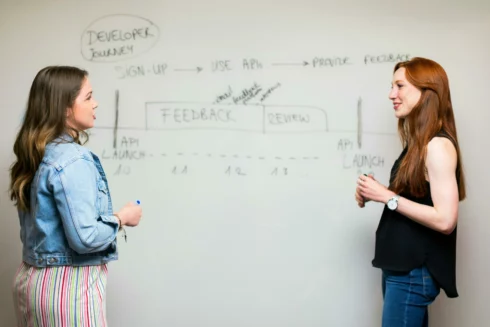
The role of software developer has historically morphed to keep up with advancements in technology. From basic writing and testing code, to use of open source code, to Agile and DevOps tools and methodologies, to security and cloud, and now to AI and vibe coding, developers have been asked to take on more tasks that take away from their original, joyful experience of creating code to meet enterprise needs.
With the adoption of AI to produce code even more quickly than developers could, the role is morphing again. Some call it context engineering, or prompt engineering. Some say developers will now have to take on model training and software architecture.
All of this raises the question: What impact does all of this have on the Developer Experience? How can the elusive ‘joy’ in the work be found?
To answer those questions, it’s important to first define the term ‘developer experience.’ Andrew Boyagi, customer CTO at Atlassian, helps organizations elevate their developer experience, making it as smooth and joyful as possible to deliver high-quality software quickly. To improve the developer experience, he said organizations need to remove the friction points developers face in doing their jobs, such as searching for information, technical debt removal, and what has been described as ‘toil.’
First and foremost, developers love to write code, because they love to solve problems, Justin Reock, deputy CTO at engineering intelligence platform provider DX, said. “A programming language provides an abstraction and a framework and a language to solve problems, but at core now, I think that we can use AI to augment our capabilities and offload some of the more boring stuff that we have to do, like, for instance, documentation,” he said.
Boyagi said that AI, though, is not being used to solve the problems that developers actually face. Writing code, he explained, is not a friction point for developers. In a State of Developer Experience report that Atlassian recently released, respondents said that while they saw big time savings using AI for code, they were spending (wasting) more time on organizational inefficiencies. In fact, 63% of respondents said their leaders don’t understand the problems they face in their rush to adopt AI.
Time Being Saved, But How’s That Time Being Used?
Developers remain important enough that they can still gravitate towards what they love, Reock said. But now, “I think that we will now be able to spend more of our time on higher-order thinking, and perhaps even be able to hit use cases and stuff that we just didn’t have the time for before the introduction of AI. But I don’t think that any real engineer is going to allow the AI to do the fun stuff for them. Why would they?”
He described activities such as architecture, brainstorming, planning and “putting up the scaffolding” as higher-level thinking. “And running the app, and poking at the app and doing all those things that the AI, at least now, still can’t really do for us.” AI seems like “magicky technology,” he said, but noted that even the highest performing agents on the SWE-bench site can only complete about a third of tasks in a totally automated, non-human way. “Most of those tasks are low level. They’re stuff that I would happily hand off to an agent so that I can work on more interesting problems.”
Boyagi said that in doing the report, the top use of saved time by developers is for improving code quality. And, he said, “I can tell you that this would not have been even in the top 20 things two years ago. So if they’re improving code quality, I’m assuming they’re improving the code quality of AI-written code, of course, but then they’re doing some other good things too, like developing new features, improving culture, and using it for documentation. So to me, the headline is they’re saving a lot of time. They’re reallocating their time wisely, but they’re losing just the same amount of time through the other elements of having a poor developer experience.”
So What Is The Developer Role Going To Become?
Brian Douglas, head of developer experience at open source AI assistant creator Continue, said he is seeing a shift in what a developer is. “I feel like what a developer is now, is anybody who can [speak] natural language to ask questions about your code.” He added that context engineering, more so than prompt engineering, is critical, “because when you go from junior to senior to leading an organization, all that context is going to get lost when people are prompting left and right and not knowing what’s happening in the team.”
He said that when he was working as an engineer, he dreaded trying to get updates in Jira tickets, and now, he can just ask a few questions to implement a feature. “This morning, I was building an analytics dashboard for my database, something I would never do myself. It’s not worth the effort. I could only do SQL commands. But right now I’m building a beautiful UI on top of my database queries to find out where its performance is good or where there’s degradation. It’s all that type of stuff that I would never have been able to buy time from my [project manager] to say, ‘Hey, go do this thing’. But now I can basically take a couple hours and say, ‘Here’s the scope of work. Let me plan it. Here’s the repo, here’s a database schema.’ Like, let’s just go to work and build a progressive implementation.”
Douglas acknowledged that there will be fewer hands needed on keyboards, but sees an opportunity for the industry to shift its collective mindframe to raise developers up. “I think it’s unfortunate to watch Microsoft do a bunch of layoffs, and a bunch of other folks now trying to figure out what their next step is and their job. Because I actually think that you could really leverage this and lean in to get 10x type of output from folks – and not 10x as in 18 hours a day instead of eight hours. Instead you’re just getting better work during your five to eight hours on the keyboard writing code.”
He mentioned amplify.dev, which according to the website says it is dedicated to empower developers and raise awareness of systemic issues in how engineering organizations are adopting, using, and evolving AI software development systems. “The opportunity is to retrain and reconfigure these resources. So where previously, you’d have a specific front-end developer, and then you have a specific back-end dev, and you’d have a DevOps person, there’s a world now where there’s one person who could orchestrate and context-engineer themselves into solving problems on multiple parts of the stack,” he said. “You amplify the skills you already have, so if you’re an okay engineer, you get to amplify yourself to be a much better engineer by using AI. If you’re already an extremely well-rounded engineer, you’re going to be able to get yourself to an elite level just by leveraging the tools that are out there through using AI.”
All agreed that for developers to continue to find employment – and joy – they will have to skill up on AI.
Need Help? Talk To The Duck
“As an engineer, literally, you take a rubber duck and you talk to it about the problem that you’re trying to solve, and you try to explain to it what you’re trying to do,” Reock explained. “It’s a great way of getting your thoughts outside of your head and to try to make your solution a little bit more bulletproof.”
AI now represents a rubber duck that knows how to code, how to speak to a human developer and understand what the developer is saying. “That’s one of my favorite workflows, actually, for AI, is what we call recursive prompting, or prompt chaining. Ask me one question at a time about this problem that I’m trying to solve right now, and after about 30 or 40 more, give me a blueprint or a specification that I could feed into a reasoning model to create a scope of work.”
That, he said, saves so much time, because rather than having to sit down and whiteboard, where there inevitably will be gaps in the way development teams plan, and things the team forgets, the AI doesn’t forget. “And it asks me the deeper, nitty-gritty questions about how do you want to handle storage? And how do you want to handle the data model, and what are the UI concerns,” he pointed out. “So to sit down and have a cool brainstorming session, I do get in flow, I stay in flow, and it’s a fun experience.”
This is where Reock said developers will find their joy. “It’s in the problem solving and the creation of the way that the problem is going to be solved that doesn’t necessarily involve them coding every bit of it, but still getting to that same solution where they can feel satisfied at the end of the day.”






